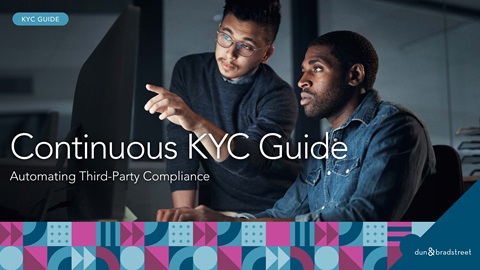
Continuous KYC Guide
Compliance automation has been talked about for over a decade. The promise of automating third-party screening and onboarding, combined with “always-on” compliance monitoring, is widely seen as the solution to ever-growing AML (anti-money laundering) and KYC (know-your-customer) demands. The benefits are already becoming clear for businesses. In Dun & Bradstreet’s Continuous KYC Guide, we estimated that the combination of compliance automation and Continuous KYC could reduce businesses’ costs and workload by over 80% compared with manual processes. For compliance professionals, this translates into less time spent on frustrating manual tasks and more time focusing on proactive risk management and the more rewarding aspects of their jobs. Yet with all these benefits on offer, many businesses are still hesitant to embrace automation. In this article, we look at what’s changed in the world of compliance automation and why it might be time to take another look.